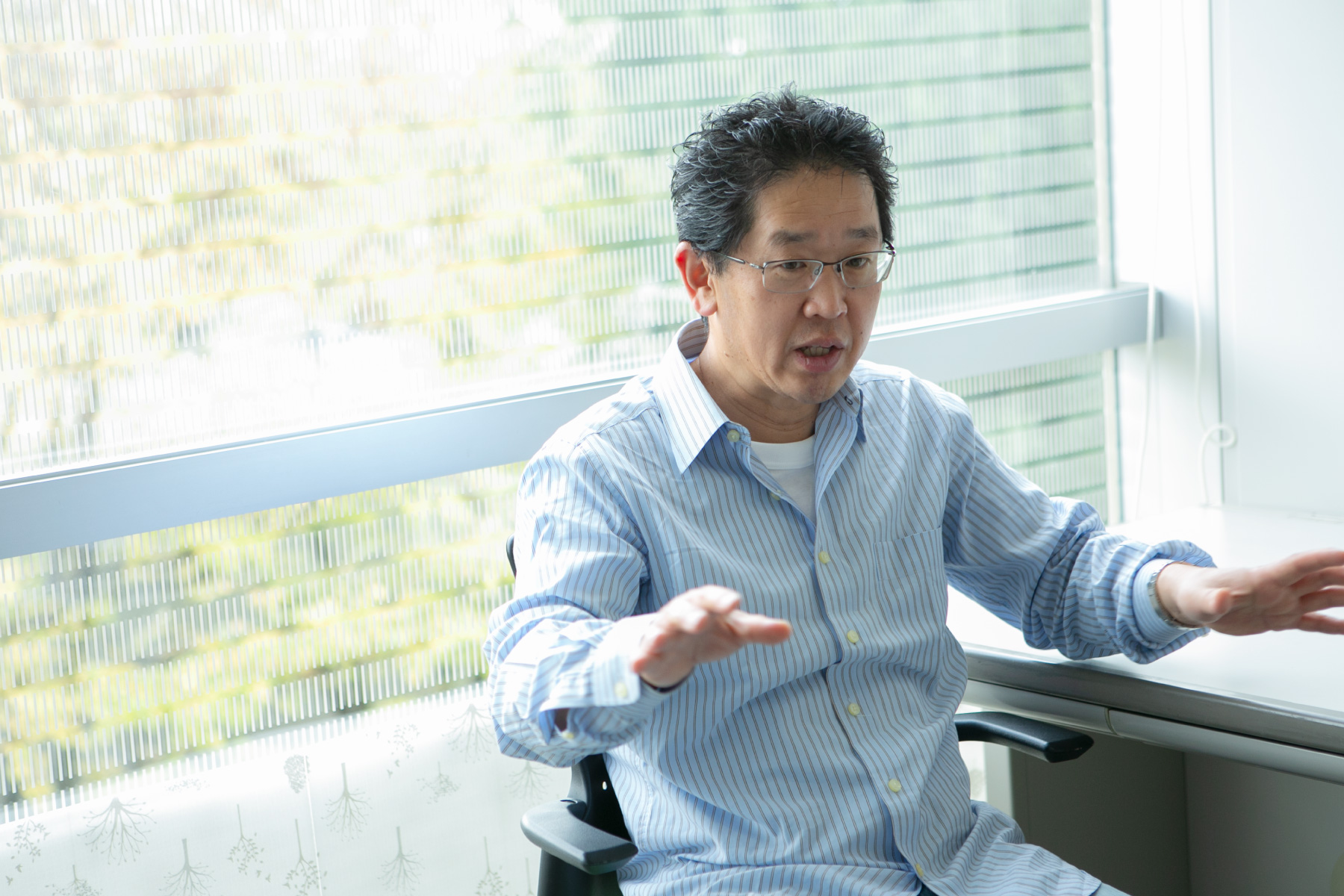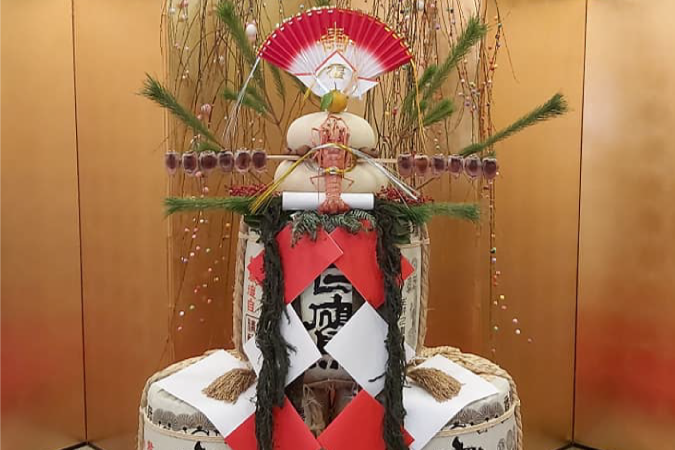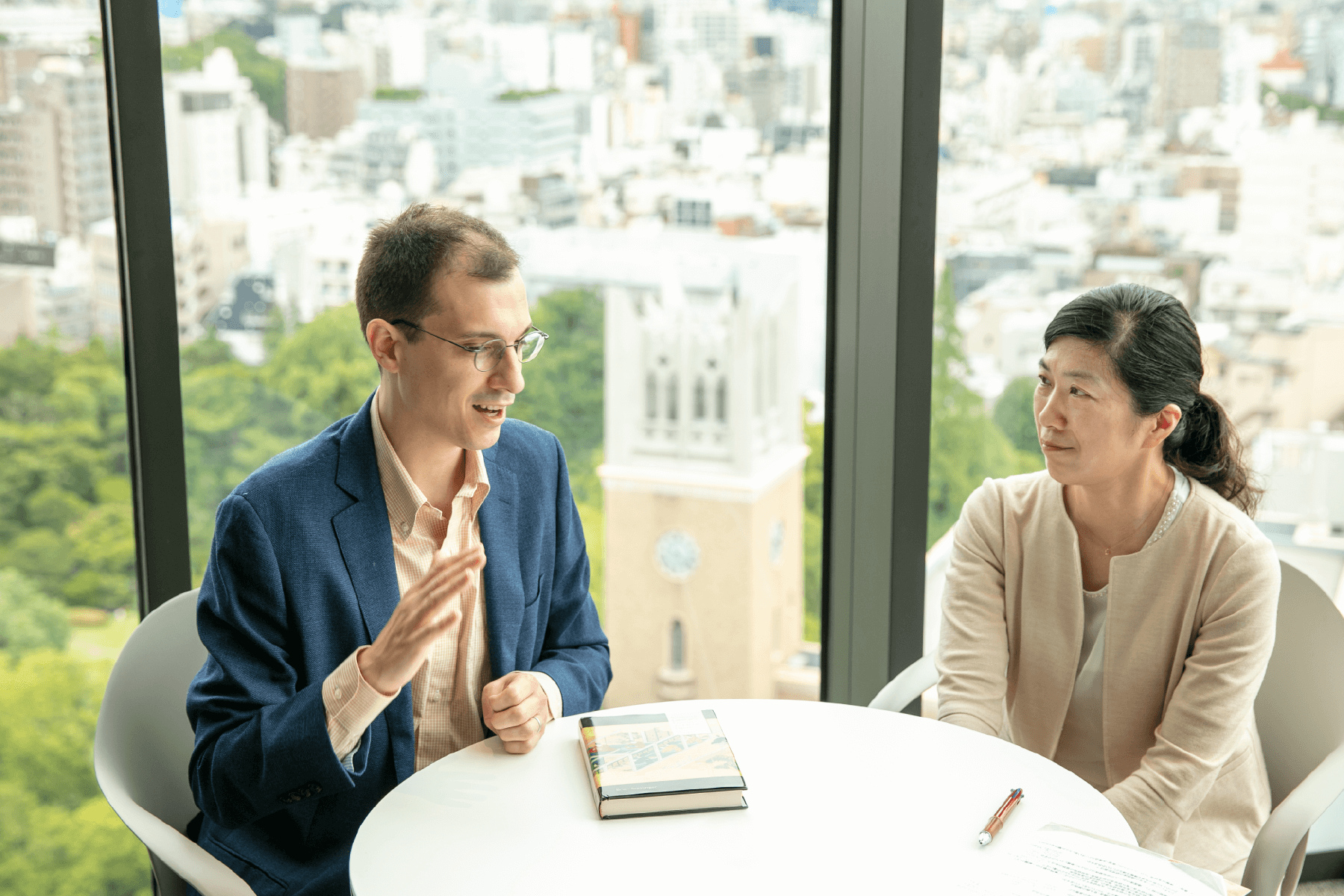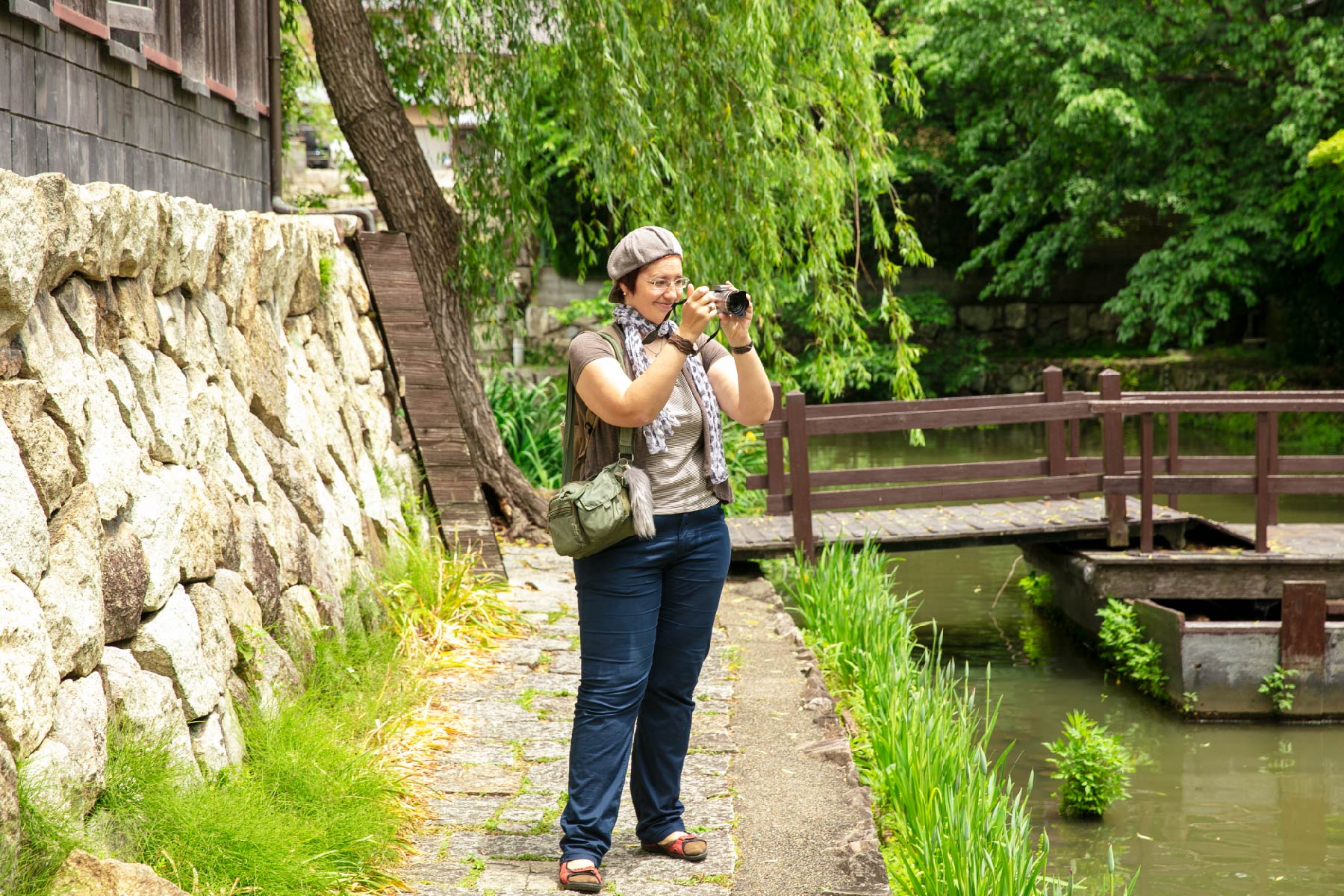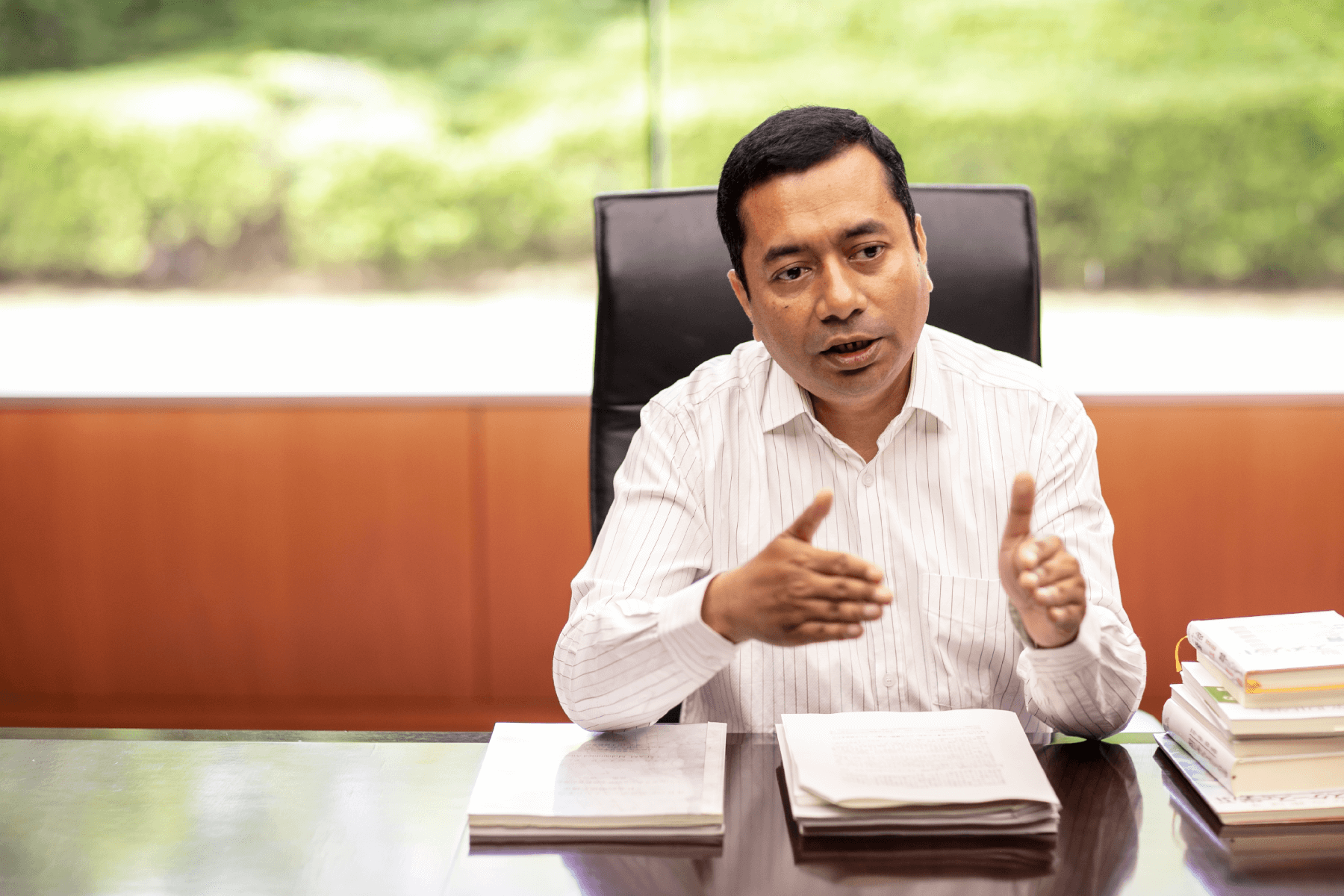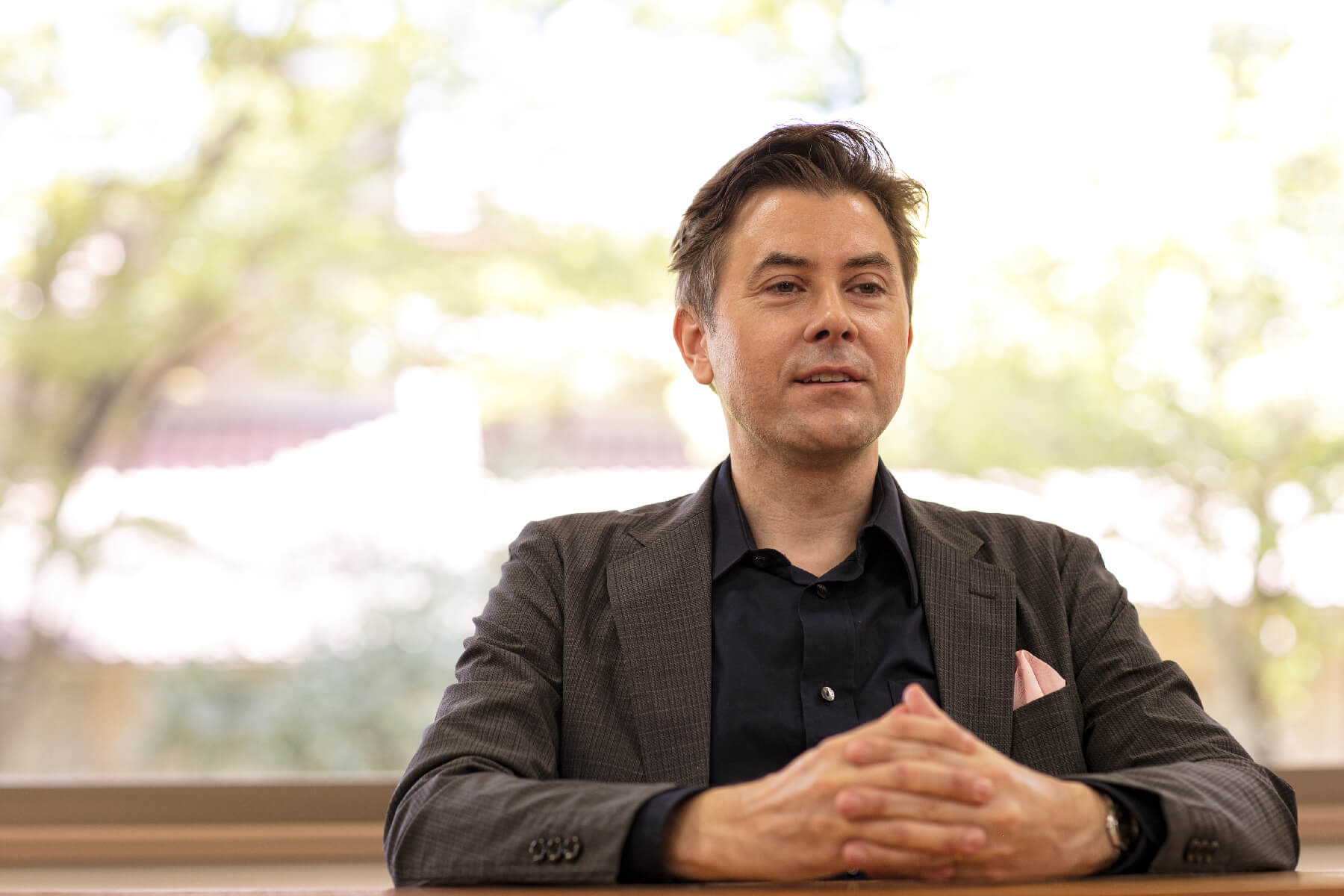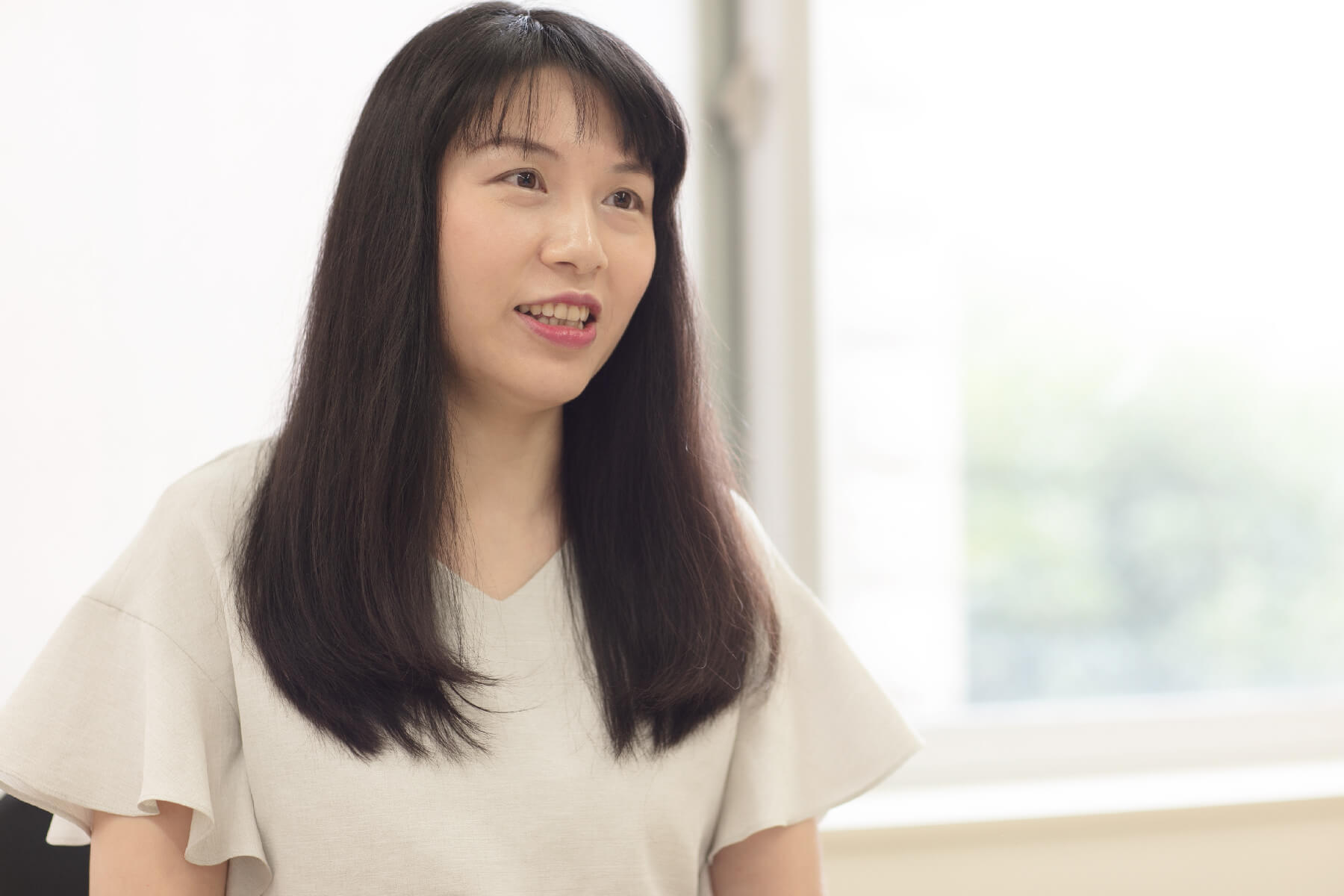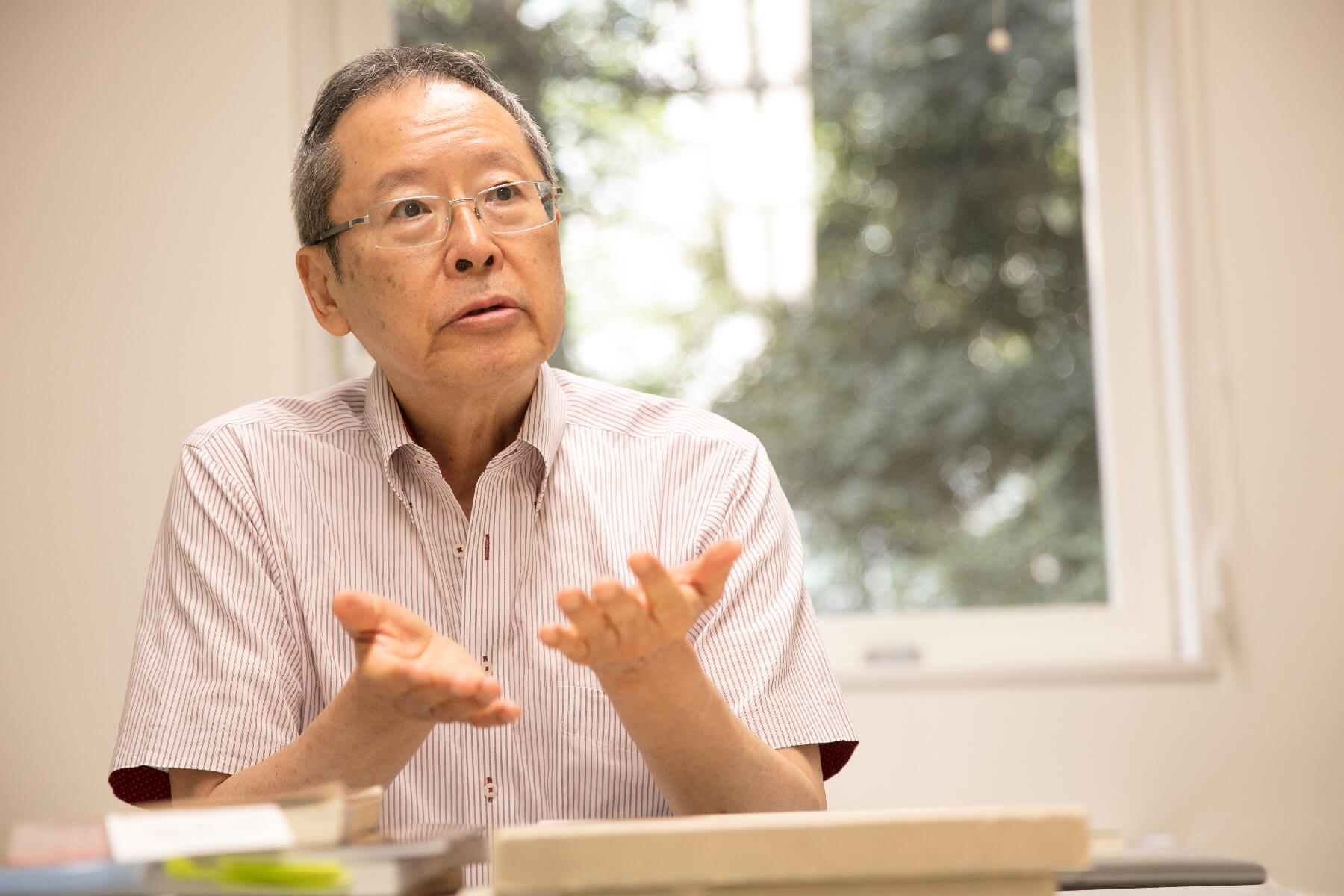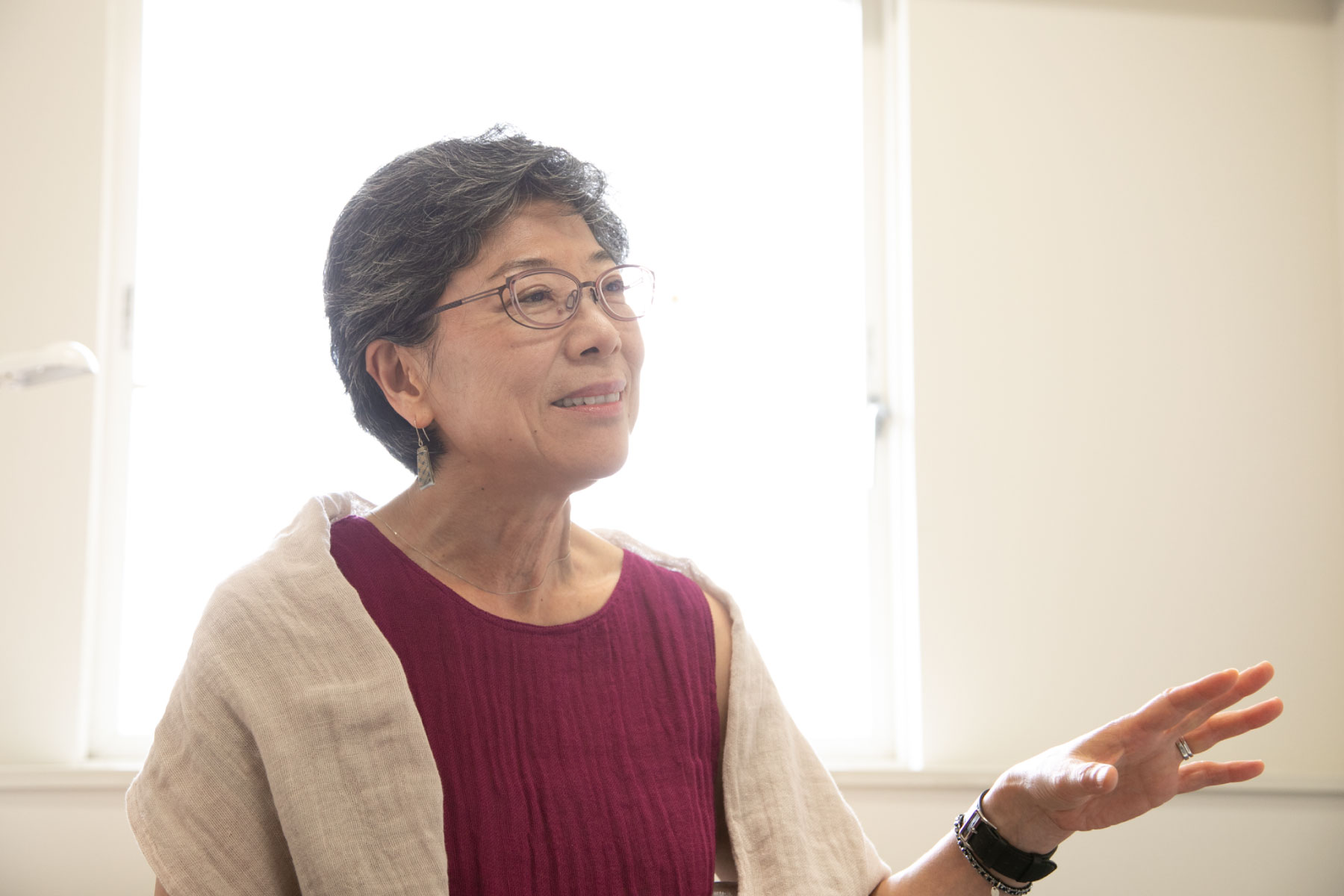
Examining the difference between “kiyoru” and “kitoru” in western dialects of Japanese
What experiences and events led you to apply for this fellowship?
It all started when a Japanese language teacher dispatched by the Japan Foundation to Ankara, the capital of Turkey, brought me a pamphlet about this fellowship run by the Hakuho Foundation. At the time I was an Assistant Professor in the Japanese Language Education Department of a Turkish university, preparing to take a test in order to become an Associate Professor, so I focused my research on that test for 2 years until I finally passed. My job at the university was just about finished, so I decided to apply for this fellowship.
The primary aim of my department is to educate teachers of the Japanese language, and it is probably the only department of its sort in the Middle East or Europe. Many students go to work at Japanese companies, so more and more of them study the Japanese language. Just 20 years ago, there were only 100 students in my department, but now there are nearly 200. Similarly, there were only 4 faculty members in my department 20 years ago, but that number has increased to 11 faculty, 5 of whom are Japanese people.
Your research is titled, “Contrastive Analysis of Turkish and Japanese.” What does that entail?
Currently, I am engaged in research of modern Japanese and modern Turkish temporal expressions that do not express time precisely.
This research actually covers two topics. During the first half of my fellowship, I did contrastive analysis of “temporal exclusivity,” which is temporality expressed by nouns in a sentence, in order to find whether or not there are nouns that exhibit limitations and nouns that do not.
For example, in Japanese you can say “Kare wa nihonjin da” (“He is Japanese”), but it would sound strange to say “Kare wa nihonjin datta” (“He was Japanese”). His quality of being Japanese does not change. However, if you see someone who appears to be very young and ask them what their job is, they may tell you “Daigaku no sensei da” (“I am a university professor”), to which you reply “Nanda kimi, sensei dattan da” (literally “Wow, you are a professor!”). This does not imply that he was a professor in the past tense. Rather, the past tense expression “datta” is used here to express surprise at hearing for the first time that the person you are talking to is a university professor. This type of expression for surprise at hearing something for the first time is called mirativity, and I have made it the focus of my research.
In the second half of my fellowship, I moved away from this topic somewhat, to look at expressions such as, “Jimen ni yuki ga tsumotte iru” (“Snow is piling up on the ground”). In contrast, you could also say, “Yuki ga futta” (“Snow fell”), or if snow is falling right now, “Yuki ga futte iru” (“Snow is falling”), or if you heard the information from someone else, “Yuki ga futta sou da yo” (“I heard that snow has fallen”). There are several similar expressions to convey the same information as that last one, such as “Yuki ga futta mitai” (“It looks like snow has fallen”), “Futta rashii” (“It seems like snow has fallen”), and “Futta you da” (“It appears snow has fallen”). In Turkish, we use one expression for all of those meanings, with a tacit understanding between the speaker and listener, so the listener must grasp what the speaker has left unsaid from context.
There is a similar phenomenon in the Kanto dialect of Japanese spoken in eastern Japan. For example, if you just say, “Densha-ga kite iru” (literally, “The train is coming/has come”), the listener cannot tell whether the train has already arrived or is still on its way. If you add more information, then it is possible to dispel any ambiguity, such as by saying “Densha ga kite iru kara isoide yo!” (“The train is coming, so hurry up!”). However, in Western Japan, they have separate expressions for each situation. They say, “Densha ga kitoru” when the train has already arrived, and “Densha ga kiyoru” when the train is still on its way. Similarly, when the leaves change color in autumn, people in Kanto say, “Mite, akai happa ga ochite iru” (“Look, red leaves are falling/have fallen”), but actually it is not clear whether the leaves have already fallen to the ground or are still blowing in the wind before they reach the ground. In contrast, people in Western Japan would say, “Happa ga jimen ni ochitoru” for the former and “ochiyoru” for the latter.
So there are subtle differences between these expressions. I think that Japanese people from the Kanto region would not know that.
You may be wondering whether or not Japanese language students in Turkey get any benefit from knowing these differences, but in fact many Turkish students go to work at Japanese companies after graduating. Not everyone working at Japanese companies is from the Kanto Region. Of course, people from the Kansai region and many other regions use these expressions, and people from Kyushu, Shikoku, and Okinawa all make the same subtle distinction between tenses. Despite the fact that nearly half of the population of Japan make this distinction, most Japanese language textbooks only use the Kanto dialect, which does not make this distinction. Because of that, you can imagine some misunderstandings occurring in a company, say if a Turkish person could not tell whether they are being asked, “Mo kowarete iru ka” (“Is it broken?”) or “Kore-kara kowareru ka?” (“Is it going to break?”).
Even with the expression for surprise at hearing something for the first time, which I mentioned earlier, if a person from Okinawa woke up in the morning to find the ground blanketed with white snow, he would not just say, “Ah, yuki ga futta!” (“Oh, it snowed!”). He would say “Yuki ga futtanda” (“It snowed!”). Or say that a Japanese person’s older sister got married. When they hear it for the first time, they might express surprise by saying, “Onee-san, kekkon shichattanda!” (“My sister got married!”). There are so many different grammatical patterns to use in Japanese, but all of them can be conveyed with a single expression in Turkish.
Typically, students would learn these expressions in their first or second year, but when I surveyed my third and fourth-year students on this, I found that about half of them could not use these expressions properly at all. The other half could not use the expressions as well as they should. For example, they would not make mistakes in sentences with a clear expression of time, such as “Watashi no ojichan ga dai niji sekai taisen no toki ni shinda” (“My grandfather died in World War 2”), but many students would make a mistake, such as forgetting to express surprise, in a simple sentence such as “Hora, tenki yoho ni yoru to, yuki ga futta so da” (“The weather report says that snow has fallen”).
Recently, some people say that even if you do not teach grammar properly, “It is good enough if people can just communicate,” but that only applies to casual conversations. Professionals in the workplace cannot do their jobs well unless they can make this kind of distinction. For that reason, I think that it is important to take measures to improve conversation skills based on grammar. It is an important point of reflection for me, now that I realize that I must be more serious about teaching my students the difference between temporal expressions and expressions that seem similar to temporal expressions but which actually have a different meaning.

The goal of my research is to publish a research paper about grammar
What is your life as a researcher like here? How is your research environment?
I start my day by watching news program on TV and preparing lunch in the morning, reading research materials and literature in the afternoon, then analyzing survey results in Excel at night. I collect data not only from students in Turkey, but also from Turkish students living in Okayama, Kansai, and Tokyo. My research environment is very convenient, because I can access all sorts of literature on the Internet at the library of the Tokyo University of Foreign Studies.
I also hold study sessions with fellow alumni who studied with me at the University of Tokyo long ago. My specialty is linguistics, so even if we cannot assemble a great deal of materials, we can still exchange opinions on various sentence structures and the like. I also hear useful information and opinions from them when I see them at academic conferences. In addition, I get help with all sorts of things from Professor Mutsumi Sagahara, a faculty member specializing in the Turkish language who is responsible for me at my receiving organization, the Tokyo University of Foreign Studies.
The final goal of my current research is to publish a research paper entitled “Japanese Tense/Aspects and Temporal Expressions.” I thought that I would be able to publish it by September, but that goal has become unfeasible, so I will publish the paper after I return to Turkey.
What was the reason you first took interest in Japan?
I originally studied English and German as elective subjects in high school, but in university I really wanted to study a language unlike European languages. I was considering Russian and Japanese at the time, and I had seen Japanese animation, such as “Captain Tsubasa,” so I started to wonder about what kind of country Japan is. Russia is geographically very close to Turkey, so many of my fellow alumni chose Russian, but I thought that it would set me apart from the rest and give me an advantage in the future if I chose a language unlike the rest, so I chose Japanese.
In 1994, I enrolled in the Japanese Language Education Department of my university. In my fourth year, I went to Okayama University for 1 year to do teacher training, and the influence of my professor at the time led me to take an interest in Japanese grammar. Until then I had just been a regular university student learning the Japanese language, but I thought it would be better for me to properly study Japanese grammar rather than go to work at a Japanese company, so I decided to apply for graduate school. I graduated from my university in Turkey and went to the University of Tokyo for 1 year as a researcher. There, I heard of a professor who was doing contrastive analysis of grammar at Okayama University, so I studied abroad there for 6 years to earn my master’s and doctorate degrees before returning to Turkey.
I took interest in Japanese grammar because the word order of Japanese is similar to that of Turkish. However, both of them are profound languages, and as I continued my research, I discovered differences between the two languages. So, I made it one of my goals to research how to best teach these differences to future students and learners of the Japanese language.
When I first came to Japan, my impression of Okayama University was that it seemed like a suitable place to study, despite being far from Tokyo. It is in a location surrounded by nature, but it is still convenient for shopping or getting books, so I really liked it. I was also able to experience Japanese culture firsthand. Of course, this is possible in Tokyo as well, but there were not many international students in Okayama at the time, so if I wanted to try Japanese calligraphy or the tea ceremony, I was welcomed as the first foreigner to visit, and people would spend a long time teaching their culture to me in great detail.
At the time I was a member of the Okayama University calligraphy club, and locals would come to see our exhibitions, so I was also able to interact with locals. Then they would invite me to meet them, so we spoke and corresponded with each other, and had a really great experience.
In the beginning, I was often surprised by the language. Back then, when I could not speak Japanese very well, I went to a certain facility in Fukuyama City, Hiroshima Prefecture. It was really in the wilderness, with the closest convenience store at least a kilometer away. After attending a Japanese language lesson in that facility, I went to the convenience store then back to the facility, and the head of the facility asked me, “Doko icchattan desuka?” (“Where did you go?”). It seemed to me at the time that he thought I had left unexpectedly because something came up. It sounded as though he was accusing me of doing something bad. But in Fukuyama, this is actually a formal expression equivalent to, “Doko ni ikaretan desuka?” in standard Japanese. He was not angry, but simply meant to ask politely where I had gone. I thought he was angry with me, so I spoke to someone else about it. I asked them if the convenience store was off limits to me, and they asked what the head of the facility had said to me. I told them he said, “Doko icchattan desuka?” They replied, “Don’t worry, that’s just a formal expression here.” Of course, it’s impossible to learn everything there is to know about the Japanese language, but I really felt that one must know the formal register of speech.

I hope for students to experience Japanese culture including myths and “yokai”
What was something you enjoyed doing in your spare time during your fellowship in Japan?
If I spent an entire year only researching grammar, I would have a very boring life indeed (laughs), so I visit ukiyo-e (woodblock print) art museums in my spare time. About once a month, I go to museums, such as Mori Art Museum in Roppongi and Ota Memorial Museum of Art in Harajuku.
I am also researching “yokai” (a term for all sorts of monsters including ghosts and goblins) and Japanese myths. Japanese myths form the basis for its yokai stories, and Japanese yokai stories in particular can be quite humorous. The stories might seem scary, but even children love some of them. I was attracted to ukiyo-e depicting Japanese yokai, and I have read some books about yokai as well. When I travel for academic conferences, if there is a road with historic ties to yokai, I go and take pictures. For example, the yokai known as ittan-momen (a flying cloth bandage that wraps around the heads of its victims to smother them) appears in comic books by Shigeru Mizuki, and is also featured in ukiyo-e. The kappa (a turtle-like creature that drowns its victims) is also very famous. Japanese yokai culture is still featured in modern pop culture and anime.
Of course, Turkey has its own equivalent of yokai. Long ago, when there was no television, radio, cinema, or even electricity, parents told their children stories before putting them to bed. Some of the Turkish stories are very frightening indeed. For instance, there is a monster that is said to kidnap children who do not go to sleep. But now that we have smartphones and tablets, I would like students from Turkey to experience this aspect of Japanese culture as well. When they walk the streets of Tokyo, they may look in the back of a store and see pictures of kappa or statuettes of tanuki (a real creature also known as a raccoon dog that often has magical powers in yokai stories).
Once I finish writing my research paper about grammar, I would also like to write a book about Japanese myths and yokai.
(Interview conducted in May 2019)




